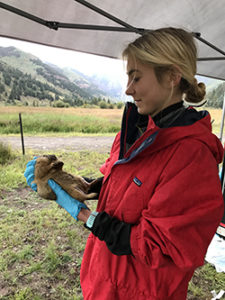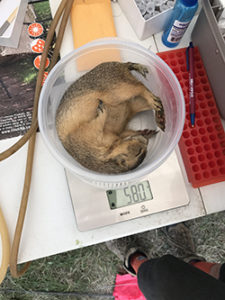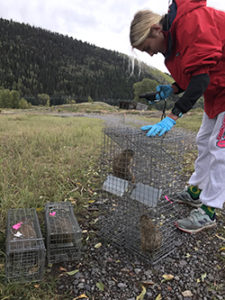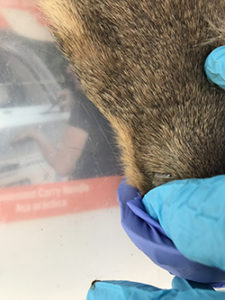My Pinhead Internship is continuing on into autumn and I had another great field session studying conservation and evolutionary biology right here in Telluride’s own Valley Floor.
I housed Colorado Parks and Wildlife biologist, Amy Sullivan, and her four field technicians at my house. Lead CU biologist, Sean Streich, brought his trailer full of prairie dog traps and all the field equipment necessary to collect the DNA samples and gather data on the Gunnison’s prairie dogs of Telluride.
We had a great dinner the night they arrived and talked about all the fun things we had done this past summer relating to prairie dog research. Amy discussed the latest plague control methodologies that they are utilizing to control plague outbreaks in prairie dog colonies. Dusting colonies has been popular and effective in the last decade, but it is labor intensive. The latest and greatest prophylactic is an oral plague vaccine called a “blueberry” because of its similarity in appearance to this fruit. They are laced with a blue dye so biologists can check for blue prairie dog scat which signals that the vaccine bait has been ingested. The possibility of attaining this currently expensive vaccine pills for our colony was also a topic of discussion.
We woke early at 5 am and headed out to release the wires holding our baited traps open which made them ready for action. They were left wired open on the colony for a day to habituate the prairie dogs to the sight and smell of the traps. We then came back at around 10 am and collected traps with prairie dogs in them. We had only caught three prairie dogs so we went through the protocol of measuring them, weighing, dusting for fleas and collecting fleas, tagging their ears, and finally drawing blood for DNA analysis. We caught a whopper prairie dog that weighed 1400grams.
Sean and the CPW crew had to get back to work after a couple days so we left the traps sprung shut on the colony for a week, figuring that the prairie dogs would then become very used to the traps. I also baited them with horse sweet mix in the interim.
Sean and Kelly from CU Boulder came back this last week Thursday and we worked through the weekend on the colony setting traps in three locations including the Shell station original colony, the Eider Creek colony, and the roundabout colony. We caught 35 prairie dogs and worked on processing them as it rained and thundered all about. Fortunately, we had a big tent and also moved the processing table into the big trailer. It was dusk when we released the last prairie dog into her burrow and took down the tent. A long day of field biology work but very gratifying as that many prairie dogs will be an excellent sampling size for Sean’s research and aid in the integrity of his data.
Sean believes that this colony of prairie dogs may be of critical importance in his genetic relatedness study. It will be interesting to see what the DNA analysis of the blood samples shows for this branch of Gunnison’s prairie dogs.
Here are some photos from the last couple of weeks.
Hope you like the pics. I will send a couple more as I cant send big files in one email.
Here is our study tent and the weighing station and me admiring a p dog that is waking up.





There are no comments published yet.